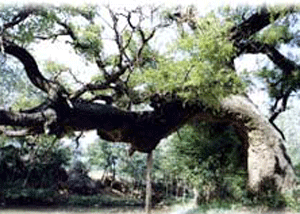In the spring of 1987, delegates to the Sixth Session of the
Eighth Municipal People's Congress, meeting in the Great Hall of
the People, overwhelmingly approved the scholar tree and oriental
cypress as the official city trees, the Chinese rose and the
chrysanthemum as Beijing's official city flowers.
The stately cypress symbolizes the courage and strength of the
Chinese people, their simple, hard working nature and their
defiance in the face of aggression. This Platydadus Orientalis, or
Oriental Arborvites, can grow as tall as 20 meters. Some of those
in Zhongshan Park were planted as long as 1,000 years ago during
the Liao Dynasty. The scholar tree is a symbol of good fortune, joy
and well-being. Dating back to the Qin and Han dynasties Sophora
Japonica were planted extensively at the Tang Dynasty Imperial
Palace in Chang'an. At Beihai Park, an ancient specimen in the
courtyard of the Painters Corridor, is believed to have been
planted during the Tang Dynasty, before 907. Another ancient
scholar tree near the Broken Bridge in the Forbidden City is said
to have been planted before 1125. Both are well adapted to
Beijing's cold, dry winter, hot and dry summer, and alkaline
soil.
 |
 |
The rose, a Chinese native, has been cross-bred many times, but
it still has half of the original Chinese strain. Known as
Perprtual Spring, Monthly Red, Snow Challenger and Victorious, it
is fast growing, regenerates easily and is graceful and long
blooming(May to October).
The chrysanthemum has many names and varieties. In Beijing
potted chrysanthemums may be seen year round. They flower in summer
and fall naturally but can be forced to bloom any time of year.
During the Qing dynasty, there were 400 rare strains of
chrysanthemum. Beijing's flora-culturists now boast more than 1,000
varieties.
(Source: BOGOG)